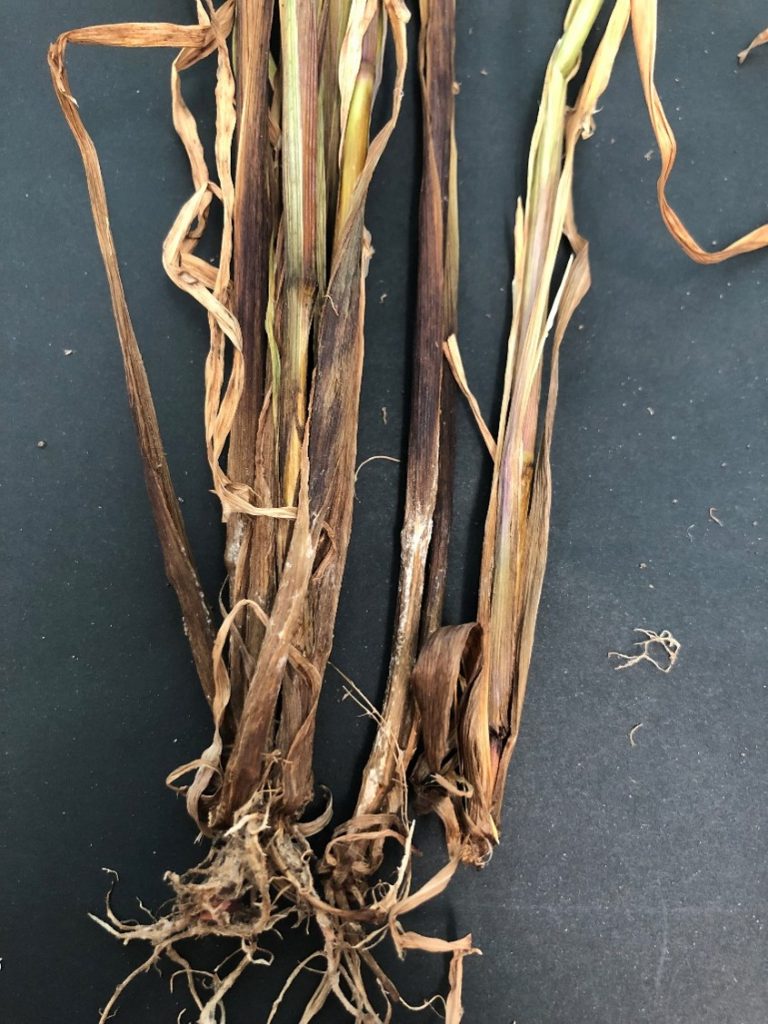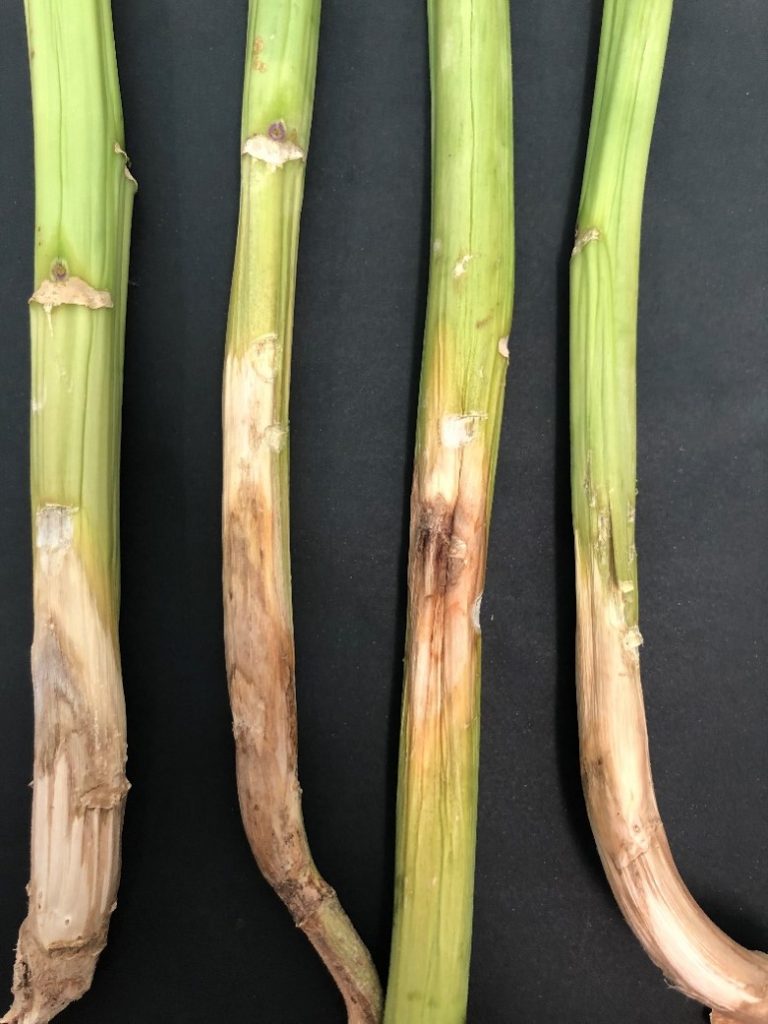Recent weather conditions have led to isolated outbreaks of two fungal diseases, fusarium crown rot and sclerotinia stem rot, in several grain crops across southern Queensland.
Crown rot
Crown rot, primarily caused by Fusarium pseudograminearum, has been detected in several barley crops across southern Queensland, but other winter cereal crops and regions are also at risk. Initial disease symptoms include browning of the crown and tiller bases under leaf sheaths, and pink discolouration around or in the crown or under leaf sheaths, disrupting water and nutrient supply to the grain head. Affected plants may develop white heads, containing little or no grain. The pathogens will survive in the affected crop residues and infect other cereal grass and weed species.

Browning at crown and base of tillers in barley plant infected with crown rot (Photo: L Kelly)
Sclerotinia stem rot
Sclerotinia stem rot (caused by Sclerotinia sclerotiorum) has been reported in a canola crop in southern Queensland. While the disease can infect any part of the plant, symptoms typically develop on the stem close to the soil surface as bleached, whitish-grey lesions. The lesions may also be found on branches higher in the canopy, and infected plants wilt and ripen prematurely. The fungal survival structures (sclerotia) develop inside the affected parts of the stem.

Whitish-grey lesion in canola plants infected with sclerotinia stem rot (Photo: L Kelly)
More information on these diseases:
- Crown rot factsheet – Southern and Western (GRDC)
- Crown rot factsheet – Northern region (GRDC)
- Northern region cereal disease update 2024 (GRDC)
- Crown rot GRDC update paper 2024 (GRDC)
- Sclerotinia factsheet (GRDC)
- Managing sclerotinia in canola (Agriculture WA)
If you see disease symptoms in winter cereal crops, please contact plant pathologist Xuechen Zhang ([email protected]) for further information on disease diagnosis. Contact Lisa Kelly ([email protected]) regarding disease in other grain crops.
Article by Lisa Kelly and Xuechen Zhang

Great information Lisa & Xuechen..
Thank you,
Natalie Moore, NSW DPIRD Grafton